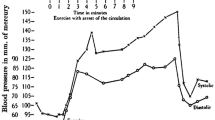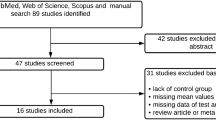Abstract
The permeability of a few muscle tissues under various loading conditions is characterized. To this end, we develop an experimental apparatus for permeability measurements which is based on the falling head method. We also design a dedicated sample holder which directs the flow through the tissue and simultaneously enables to pre-compress it. Although outside of the scope of this work, we recall that the permeability of the muscle has a crucial role in the pathophysiology of various diseases such as the compartment syndrome. Following the measurements of porcine, beef, chicken and lamb samples, we find that the permeability decreases with the pre-compression of the tissue. Similar decrease is observed following dehydration of the tissue. Remarkably, we find that within a physiological pressure range the permeabilities of the various samples are quite similar. This suggests that the muscle permeability is governed by a common micro-mechanical mechanism in which the blood propagates through the interstitial spaces. Under physiological loading conditions, the muscle permeability is in the range between 80 and 230 \({\frac{{\text {mm}}^{4}}{{\text{N s}}}}\).





Similar content being viewed by others
References
Biot MA (1941) General theory of three-dimensional consolidation. J Appl Phys 12:155–164
Eliassen E, Folkow B, Hilton SM, ÖBerg B, Rippe B (1974) Pressure-volume characteristics of the interstitial fluid space in the skeletal muscle of the cat. Acta Physiol Scand 90:583–593
Evertz LQ, Greising SM, Morrow DA, Sieck GC, Kaufman KR (2016) Analysis of fluid movement in skeletal muscle using fluorescent microspheres. Muscle Nerve 54:444–450
Frink M, Hildebrand F, Krettek C, Brand J, Hankemeier S (2010) Compartment syndrome of the lower leg and foot. Clin Orthop Relat Res 468:940–950
Guyton AC (1965) Interstitial fluid pressure: II. Pressure-volume curves of interstitial space. Circ Res 16:452–460
Guyton AC (1972) I. Compliance of the interstitial space and the measurement of tissue pressure. Pflügers Archiv 336:S1–S20
Hargens AR, Akeson WH, Mubarak SJ, Owen CA, Evans KL, Garetto LP, Gonsalves MR, Schmidt DA (1978) Fluid balance within the canine anterolateral compartment and its relationship to compartment syndromes. J Bone Jt Surg 60–A:499–505
Levick JR (1987) Flow through interstitium and other fibrous matrices. Q J Exp Physiol 72:409–437
Maroudas A (1968) Physicochemical properties of cartilage in the light of ion exchange theory. Biophys J 8:575–595
Mazzoni MC, Skalak TC, Schmid-Schönbein GW (1990) Effects of skeletal muscle fiber deformation on lymphatic volumes. Am J Physiol Heart Circ Physiol 259:H1860–H1868
McQueen MM, Duckworth AD (2014) The diagnosis of acute compartment syndrome: a review. Eur J Trauma Emerg Surg 40:521–528
Mescher AL (2013) Chapter 10. Muscle tissue. In: Weitz M, Kearns B (eds) Junqueira’s basic histology, 13th edn. McGraw-Hill, New York
Mow VC, Holmes MH, Lai WM (1984) Fluid transport and mechanical properties of articular cartilage: a review. J Biomech 17:377–394
Nudel I, Dorfmann L, deBotton G (2017) The compartment syndrome: is the intra-compartment pressure a reliable indicator for early diagnosis? Math Med Biol 34:547–558
Pasic N, Bryant D, Willits K, Whitehead D (2015) Assessing outcomes in individuals undergoing fasciotomy for chronic exertional compartment syndrome of the leg. Arthrosc J Arthrosc Relat Surg 31:707–713.e5
Pechar J, Lyons MM (2016) Acute compartment syndrome of the lower leg: a review. J Nurse Pract 12:265–270
Reed RK, Wiig H (1981) Compliance of the interstitial space in rats. I. Studies on hindlimb skeletal muscle. Acta Physiol Scand 113:297–305
Swartz MA, Fleury ME (2007) Interstitial flow and its effects in soft tissues. Annu Rev Biomed Eng 9:229–256
Vollmar B, Westermann S, Menger M (1999) Microvascular response to compartment syndrome-like external pressure elevation: an in vivo fluorescence microscopic study in the hamster striated muscle. J Trauma Inj Infect Crit Care 46:91–96
von Keudell AG, Weaver MJ, Appleton PT, Bae DS, Dyer GSM, Heng M, Jupiter JB, Vrahas MS (2015) Diagnosis and treatment of acute extremity compartment syndrome. Lancet 386:1299–1310
Wheatley BB, Odegard GM, Kaufman KR, Haut Donahue TL (2016) Skeletal muscle permeability: direct experimental evaluation and modeling implications. In: Proceedings of the 2016 summer biomechanics, bioengineering and biotransport conference (SB3C), organizing committee for the 2016 summer biomechanics, bioengineering, and biotransport conference, pp 232–233 (presented to: summer biomechanics, bioengineering, and biotransport conference (SB3C); 2016 Jun 29–Jul 2; National Harbor, MD, USA). http://sb3c.org/wp-content/uploads/SB3C2016-Proceedings-C.pdf.zip
Wiig H, Swartz MA (2012) Interstitial fluid and lymph formation and transport: physiological regulation and roles in inflammation and cancer. Physiol Rev 92:1005–1060
Zakaria ER, Lofthouse J, Flessner MF (1997) In vivo hydraulic conductivity of muscle: effects of hydrostatic pressure. Am J Physiol Heart Circ Physiol 273:H2774–H2782
Zakaria ER, Lofthouse J, Flessner MF (1999) In vivo effects of hydrostatic pressure on interstitium of abdominal wall muscle. Am J Physiol Heart Circ Physiol 276:H517–H529
Author information
Authors and Affiliations
Corresponding author
Additional information
Publisher's Note
Springer Nature remains neutral with regard to jurisdictional claims in published maps and institutional affiliations.
Rights and permissions
About this article
Cite this article
Nudel, I., Hadas, O. & deBotton, G. Experimental study of muscle permeability under various loading conditions. Biomech Model Mechanobiol 18, 1189–1195 (2019). https://doi.org/10.1007/s10237-019-01138-0
Received:
Accepted:
Published:
Issue Date:
DOI: https://doi.org/10.1007/s10237-019-01138-0




